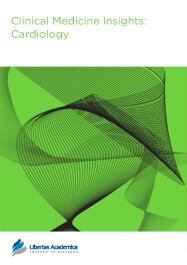

Publication Date: 12 Feb 2014
Type: Original Research
Journal: Clinical Medicine Insights: Cardiology
Citation: Clinical Medicine Insights: Cardiology 2014:8 17-21
doi: 10.4137/CMC.S11535

Background: Maximal hyperemia is the critical prerequisite for fractional flow reserve (FFR) assessment. Despite intravenous (IV) adenosine currently being the recommended approach, intracoronary (IC) administration of adenosine constitutes a valuable alternative in everyday practice. However, it is surprisingly unclear which IC strategy allows the achievement of FFR values that are comparable to IV adenosine.
Objectives: This study sought to compare increasing doses of IC adenosine versus IV adenosine for FFR.
Methods: 30 intermediate coronary stenoses undergoing FFR measurement were prospectively and consecutively enrolled. Hyperemia was sequentially induced by bolus of IC adenosine (ADN; 150 µg) followed by IV adenosine (IVADN) infusion over 3 minutes at dose of (140 µg/kg/min). FFR values, symptoms, and development of atrioventricular block were recorded.
Results: 150 µg doses of IC adenosine were well tolerated and associated with fewer symptoms than IV adenosine. Intracoronary adenosine doses induced a significant decrease of FFR compared with baseline levels (P < 0.01). Among the 6 patients with FFR values less than 0.80 identified by IVADN, 4 were correctly identified also by 150 µg bolus IC adenosine. Larger randomized studies with cross-over design are necessary to verify the results.
Conclusions: This small pilot study suggests that IC adenosine might be an alternative to IV adenosine. Larger randomized studies with a cross-over design are necessary.
PDF (479.48 KB PDF FORMAT)
RIS citation (ENDNOTE, REFERENCE MANAGER, PROCITE, REFWORKS)
BibTex citation (BIBDESK, LATEX)
XML
PMC HTML

My co-authors and I had a very positive experience with the review and publication process in Clinical Medicine Insights: Cardiology. The review was on point, and publication was also rapid and allowed us the needed revisions in the proof preparation process.
Facebook Google+ Twitter
Pinterest Tumblr YouTube